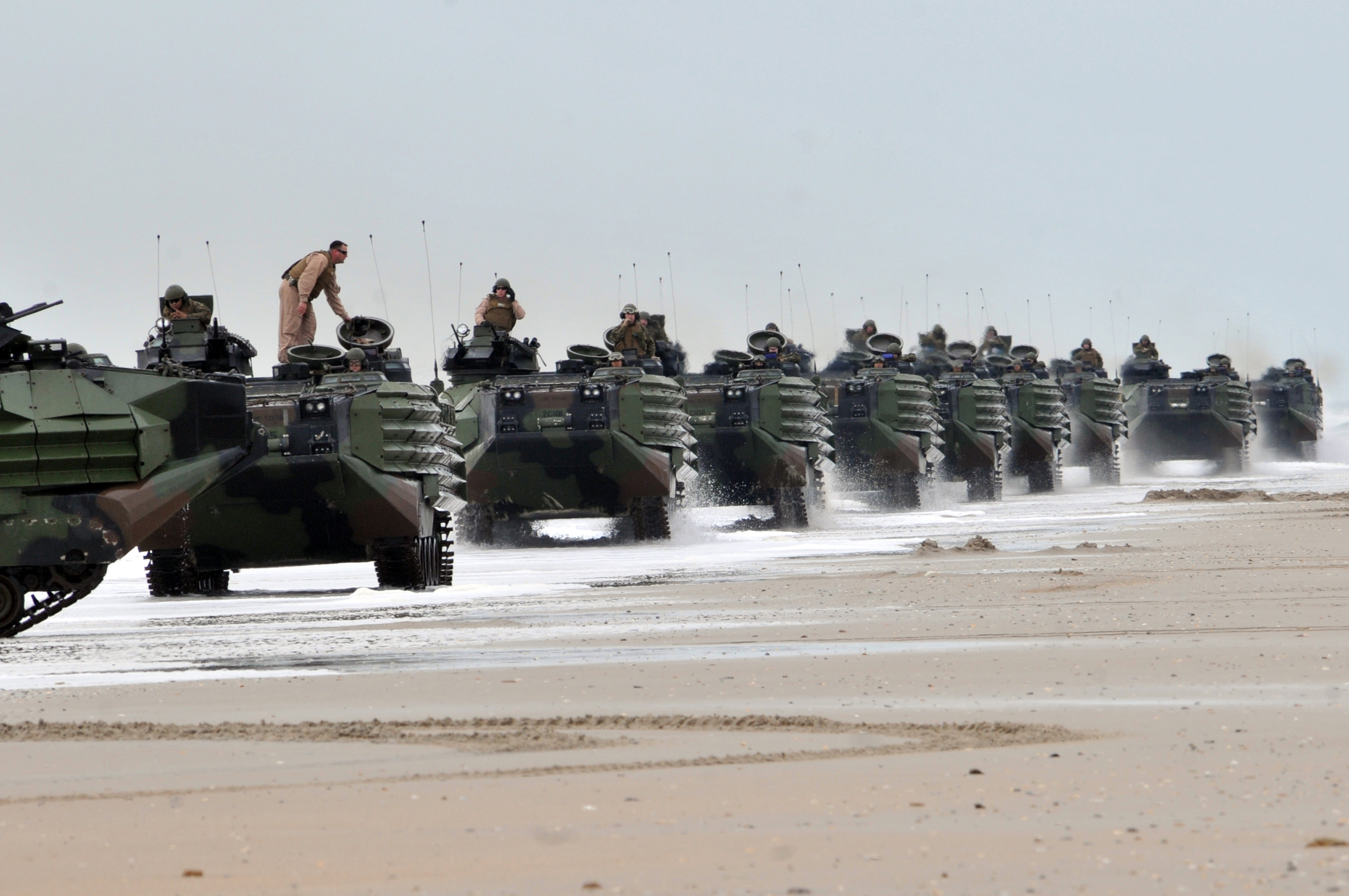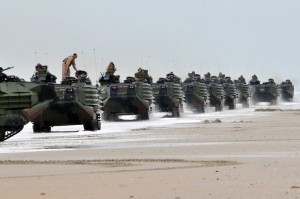
Connecting the Asia Pivot to Acquisition Strategy
 With the pivot to the Asia-Pacific region already in motion, the US military is restructuring its forces to better position for operations in a theater of oceans and islands. This shift in strategy comes after a decade of land wars in Iraq and Afghanistan where there was little need for amphibious operational capabilities. Leaders have identified some creative solutions to deal with the theater-wide transport and ship-to-shore movement challenges they anticipate facing in the Pacific.
With the pivot to the Asia-Pacific region already in motion, the US military is restructuring its forces to better position for operations in a theater of oceans and islands. This shift in strategy comes after a decade of land wars in Iraq and Afghanistan where there was little need for amphibious operational capabilities. Leaders have identified some creative solutions to deal with the theater-wide transport and ship-to-shore movement challenges they anticipate facing in the Pacific.
Systems such as the Amphibious Combat Vehicle (ACV) and Joint High Speed Vehicle (JHSV) signify a return to expeditionary roots and sea-based operations, especially in the case of the Marine Corps. But with the legacy of the MRAP haunting future acquisitions, the US should evaluate how each purchase complements both force readiness in the Pacific and a viable long-term defense strategy.
Currently, the US military falls short in its capacity for effective force projection in such a large and varied theater as the Asia-Pacific region, partly due to outdated or inadequate equipment. As part of several programs designed to back up the new strategy with resources, the US Department of Defense has contracts to develop the ACV and JHSV for use in increasing amphibious operations.
The ACV is scheduled to replace the now nearly 40 year old Amphibious Assault Vehicles (AAVs) in the task of moving troops from ship to shore. AAVs are lacking in direct fire and maneuver, ground tactical mobility and close combat capabilities. In contrast, the ACV, by employing new technology and adapting capabilities specifically to the Pacific environment, will overcome current challenges and increase survivability and weight margin, and improve crew visibility. Marine Corps Commandant General James Amos said that a competition to develop the ACV would kick off this fall with the winner receiving a contract to produce enough vehicles to transport 12 battalions of Marines.
October 1st saw the launch of the second in a series of ten JHSVs to be manufactured over the course of the next eight years. The JHSV is a naval vessel designed to be a “versatile, non-combatant, transport ship that will be used for fast intra-theater transportation of troops, military vehicles, and equipment”. It is also capable of providing the administrative lift that military leaders have hailed as so crucial to force projection in the Pacific.
While these two programs clearly fill a capability gap in the military, how do they fit into long-term US goals and interests? In the May 2010 National Security Strategy, President Obama outlined a strategy of “national renewal and global leadership”, with emphasis on rebuilding the US economy and strengthening old alliances. With these goals in mind, the US military should evaluate how each decision corresponds to both the objectives of the Asia-Pacific pivot and the long-term US national strategy.
Because President Obama cited economic growth as a crucial factor in US national security, the cost of the ACV and JHSV will partially decide its effectiveness. During a time when the military is witnessing across the board personnel cuts, defense leaders should weigh the increased capabilities of these two programs against their long-term economic costs. It is a simple enough recommendation that often is ignored in favor of improving immediate force readiness and leaving the costs of maintenance, storage and decommissioning for future deliberation. This approach is not only wasteful, but can degrade US national security over time, as seen by the controversial MRAP.
Despite costs, the ACV and JHSV may contribute to the other goal of the NSS to strengthen alliances. Re-developing an amphibious capability could contribute to US force projection in the Pacific, and by relation, will project the strength of US regional allies as well. Already, closer military partnerships with countries such as Australia, Japan and India have yielded closer ties in economic and cultural areas. At the same time, a US military buildup should avoid alienating existing partners and other regional powers by clarifying the objectives of the mission in the Pacific.
The rebalancing of US forces to the Asia-Pacific region creates both opportunities and challenges for defense leaders. While developing the capability for advanced amphibious operations across a wide and varied theater, the US is also bound to its long-term national security goals and strategy. Acquisitions such as the ACV and JHSV, if developed with these goals in mind, have the potential to enhance regional force projection, bolster foreign partnerships and complement economic strategies at home. The challenge will be to avoid unnecessary cost and redundancy in the drive for force readiness.






[…] Connecting the Asia Pivot to Acquisition Strategy […]
While the ACV is an unknown based on over a decade of use starting first with the RAN HMAS Jervis Bay in 1999-2000 the US of JHSV’s is a proven and fiscally safe program.
The HSV WestPac Express over the years in Okinawa has had a technical availability rate of 99% and that is for a vessel not purpose built for the military.
Based on calculations moving a similar amount of cargo on a JHSV would require something like 17 C-17’s (or equivalent flights) moving from South Korea to Okinawa or ice versa. So the JHSV does get you bang for your buck.